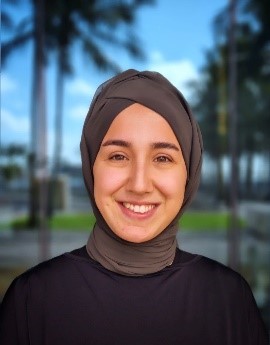PhD-Postdoc series
The PhD-Postdoc series will be back in January 2025 with some news!
The Next Generation Solar Energy (NGSE) PhD-Postdoc series aims to promote the work of emerging scientists in the field of solar energy. Whereas many talks at mainstream conferences are given by experienced professors and group leaders, here only early career researchers will be given a stage to promote a new generation of promising scientists.
Group leaders and professors are more than welcome to attend the talks and ask questions to the speaker. In this fashion, the series will provide a platform for experienced scientists to give feedback and challenge the young generation, but also to scout for future potential collaborators and colleagues.
This series aims to facilitate discussions and to allow for deeper insights into phenomena as well as characterization techniques. As such, presentations will focus on clearly defined topics covered in-depth, rather than a list of big achievements.
The series is organized by a committee of early career researchers.
Presentations will be around 30 minutes with copious time for questions. The series runs online via Zoom on the second and fourth Wednesday of every month. Sessions start at 5 PM Berlin time (GMT+2), which, depending on your location, translates, into 8 AM Los Angeles (GMT-7), 11 AM Montreal (GMT-4) or 11 PM (GMT+8) Beijing.
With the speakers’ permission (embargo period possible) the talks will be recorded and uploaded to the NGSE YouTube channel.
We look forward to welcoming all of you to these events,
Dr. V.M. Le Corre | Dr. Simon Kahmann
Registration:
The registration to attend the NGSE – PhD-Postdoc series is free of charge!
To register in advance please follow the links below:
Click here to register for the second Wednesday of the month’s talks
Click here to register for the fourth Wednesday of the month’s talks
Note that if you register once for either of the meetings you will not have to register again.
Add to Google Calendar Add .ics to your Calendar
22-May-2024 – Bowen Yang:

Multifunctional sulfonium-based treatment for durable perovskite solar cells
Both performance loss and degradation of perovskite solar cells (PSCs) are initiated at grain boundaries (GBs) and interfaces, where defects and mobile ions tend to accumulate under external stress, such as continuous illumination, humid environment, and elevated temperature. Therefore, suppressing surface defects along with inhibiting mobile ion migration is critical to achieve PSCs long term stability. Different molecular species have been explored to suppress defect formation and ion migration either in the perovskite bulk or at the adjacent interfaces, with the ultimate goal of achieving stable PSCs. These species include ammonium-based salts, small organic molecules, polymers and other passivation agents including inorganic salts. A new category of aprotic sulfonium-based molecules shows great potential in stabilizing PSCs, however, it remains largely unexplored.
In this work, we innovated a sulfonium-based molecule to post-treat formamidinium lead iodide perovskite films, which shows outstanding stability upon light soaking and remarkably remains in black-phase after 2 years ageing under ambient condition without encapsulation. The DMPESI-treated PSCs deliver a breakthrough record in operational stability of highly-efficient PSCs with less than 1% performance loss after more than 4500 h at maximum power point tracking, yielding a theoretical T80 of over 9 years under continuous 1-sun illumination. They also present less than 5% PCE drops under various ageing conditions.
Schedule:
| Date: | Speaker: | Title & Abstract: | Link: | |
| 27-Sep-2023 |  | Pilar López Varo – Institut Photovoltaïque d’Île-de-France (FR) | Ion Migration in Perovskite Solar Cells in X-Ray Photoemission Spectroscopy | Link |
| 11-Oct-2023 |  | Esma Ugur – KAUST, KSA | Overcoming the challenges of the perovskite-based tandem solar cells: A spectroscopy perspective | Link |
| 25-Oct-2023 |  | Luke Sutherland – Monash University, Aus | Carbon Electrodes for Highly Efficient Small, Large, Rigid, and Flexible Perovskite Solar Cells | Link |
| 8-Nov-2023 |  | Julien F. Gorenflot – KAUST, KSA | Transient absorption spectroscopy on organic photovoltaic materials: Why? How? And what? | Link |
| 22-Nov-2023 |  | Mariam Ahmad – University of Southern Denmark, DK | Unveiling the electronic State interplay at TiOx/ITIC Electron transport layer/non-fullerene acceptor interfaces in highly efficient organic photovoltaics | Link |
| 24-Jan-2024 |  | Lennart Reb – Technical University of Munich, DE | Next-Generation Solar Cells for Space Applications – Space Characterization and X-Ray Studies on Perovskite and Organic Solar Cells | Link |
| 14-Feb-2024 |  | Zijian Peng – Friedrich-Alexander-Universität Erlangen-Nürnberg, DE | Understanding How 2D/3D Interfaces Deteriorate the Long-Term Stability of Perovskite Solar Cells under 85°C and Light-Soaking | Link |
| 28-Feb-2024 |  | David Garcia Romero – University of Groningen, NL | Tin Oxide for High-Performance and Stable Organic Solar Cells | Link |
| 13-Mar-2024 |  | Hannes Hempel – Helmholtz-Zentrum Berlin, DE | Transient Photoluminescence of Lead Halide Perovskites Beyond Lifetimes | Link |
| 27-Mar-2024 |  | Abigail Hering – UC Davis, US | High-throughput characterization and machine-learning assisted analysis of halide perovskite stability | Link |
| 10-Apr-2024 |  | Arianna Quesada Ramirez – ICMAB, ES | Ellipsometric measurements in organic semiconducting materials for photovoltaics | Link |
| 24-Apr-2024 | No Talk | |||
| 08-May-2024 |  | Kyle Frohna – Stanford University, US | Multimodal Microscopic Characterisation of Halide Perovskites | Link |
| 22-May-2024 |  | Bowen Yang – Uppsala University | Multifunctional sulfonium-based treatment for durable perovskite solar cells | Link |
